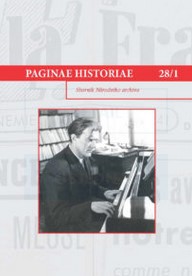SOUKROMÉ KAPLE V RADONICKÉM VIKARIÁTU V POSLEDNÍ ČTVRTINĚ 17. STOLETÍ
PRIVATE (CHÂTAU) CHAPELS IN THE PRAGUE ARCHDIOCESE IN THE LAST QUARTER OF THE 17TH CENTURY (EXAMPLE OF RADONICE VICARAGE)
Author(s): Leoš ZichSubject(s): Christian Theology and Religion, History of Church(es), Local History / Microhistory, 17th Century
Published by: Národní archiv
Keywords: Prague Archdiocese; Radonice Vicarage; private chapels;
Summary/Abstract: The Canon Law recognises public and private chapels. The basic source regulating establishment and use of private chapels within the Prague Archdiocese during the 17th century was the Statutes of Berka synod from 1605. The stipulations of these statutes provided for the masses to be celebrated in respectable places and not to necessarily disturb the position of the parish church by celebrating masses in a private building. Another norms relating to private chapels can be found in the so-called spring and autumn patents. The subject appears regularly since the latter half of the 17th century while pertaining stipulations regarded especially the canonical visitation of that space that was to be used as a private chapel and the procedure for issuing the license. The major encroachment took place in January 1696 when Breuner patent stipulated the abolition of all previously issued licenses. Private chapels in Radonice vicarage in the last quarter of the 17th century are accounted of in the last point of the so-called parish reports from 1676/77 and 1700. An older set of reports enumerates as many as 11 private chapels in the vicarage, the younger a one less. Much more information to the chapels can be found in the per-taining files, which, on the other hand, shows that the parish reports did not cover all the private chapels existing in the vicarage at the time. Data about other private chapels in the châteaux Drahonice, Chyše, Ležky and in the Augustinian manor in Líšťany and in a “Lusthaus” near Sedlec were captured. Both based on normative sources (stipulations of spring and autumn patents) and on the pertaining files, it seems obvious that, during the latter half of the 17th century, a strong effort was coming from the consistory to control these chapels linked to a bureaucratisation of a license issuing procedure.
Journal: Paginae Historiae
- Issue Year: 28/2020
- Issue No: 1
- Page Range: 13-39
- Page Count: 27
- Language: Czech

